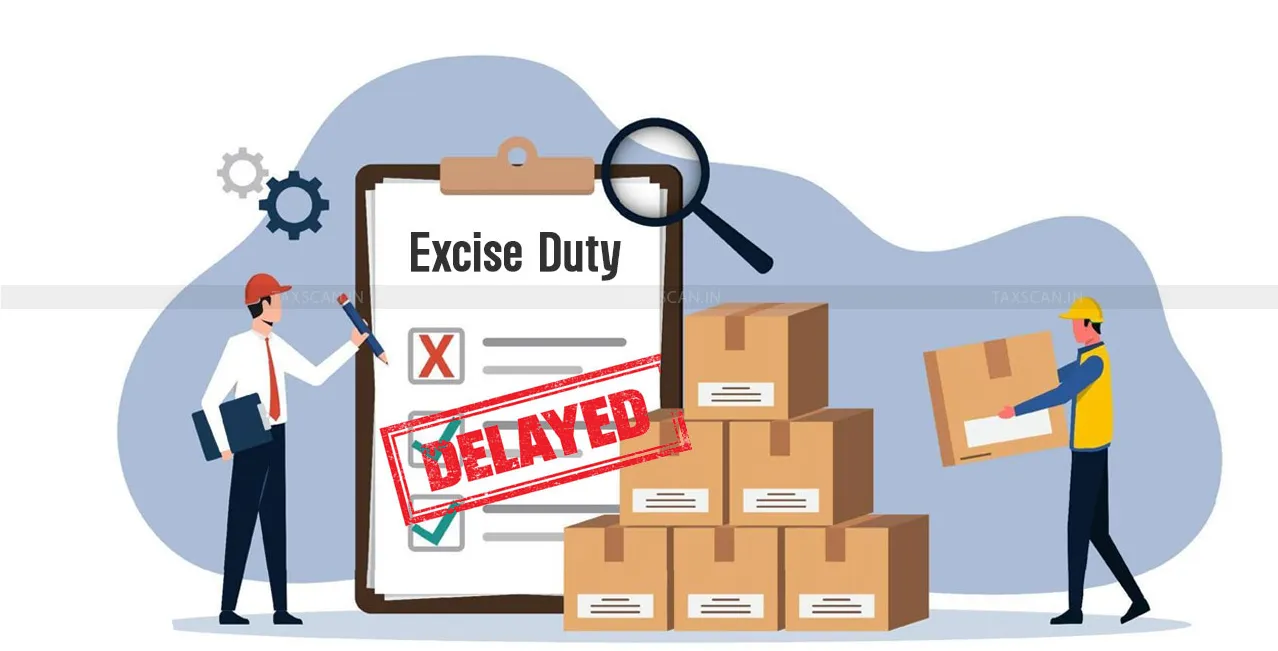
Author
LoansJagat Team
Read Time
6 Min
04 Aug 2025
What is Excise Duty? Meaning, Applicability & GST Impact
Excise duty is an indirect tax that the central government levies on goods manufactured or produced within India, rather than on those being sold or imported.
A Simple Explanation of Excise Duty With the Help of Nitya:
Let’s understand with the help of an example of Nitya. She runs a small factory that makes tobacco pouches. Every month, she produces 10,000 packs. Before she can send them out, she must pay Excise Duty, which is a tax charged when goods are made, not when they are sold. If the rate is ₹25 per pack, she pays ₹250,000, even if she has not sold any yet.
Excise Duty is an indirect tax collected by the Central Government. It has been in place since the 1940s under the Central Excise Act, 1944. Before GST started in 2017, many goods such as soft drinks, cosmetics, and electronics were taxed under excise. Now, it applies only to petrol, diesel, alcohol, and tobacco.
Even today, excise duty is a big source of income for the government. In the financial year 2014 to 2015, the government collected ₹99,000 crore from fuel excise. By 2020 to 2021, this amount increased to ₹373,000 crore. That is a rise of over 275% in just six years.
Why It Matters Today?
Excise duty remains a major source of revenue for the government, especially through fuel. In the financial year 2014–15, excise on petrol and diesel fetched approximately ₹99,000 crore. By 2020–21, this figure skyrocketed to nearly ₹3.73 lakh crore, reflecting a 277% increase in seven years. Further, excise collections on petrol and diesel rose from around ₹74,000 crore in 2014–15 to almost ₹2.95 lakh crore by January 2021, marking a 300% rise over six years. This immense contribution highlights excise duty’s continued relevance and shows its powerful impact on government revenue, even in the post-GST era.
Types of Excise Duties in India
Excise duty in India comes in different forms, each targeting specific goods or purposes. The table below shows the main types along with examples to help you understand how much tax applies.
These different duties allow the government to raise revenue and regulate the consumption of certain goods.
Read More – What is Indirect Tax: Meaning, Types & Examples Explained
Tips for Understanding Excise Duty:
- Excise Duty is charged when goods are made or removed from a factory, not at sale.
- Rates vary widely depending on the product and state.
- Cess and NCCD add extra cost for health and infrastructure funding.
- Petrol and tobacco have some of the highest excise rates due to demand and regulatory needs.
Applicability & Compliance Requirements
Excise duty applies to the manufacturer or producer of goods within India. The taxable event occurs when goods are removed from the factory, regardless of whether they are sold, transferred, or used internally.
Example: Petrol Excise Breakdown
Note: The total excise duty on petrol is approximately ₹19.90 per litre, constituting about 26.5% of the retail pump price.
Compliance Checklist:
- Registration: Mandatory for units above the specified threshold. Non-compliance can lead to penalties.
- Monthly Returns & Payment: Must be filed via the ACES portal within 10 days after the end of each month.
- Annual Return: Due by 30th April following the end of the financial year
- CENVAT Credit: Available on inputs and capital goods. Post-GST, carry-forward rules apply.
Excise Duty vs. GST: Key Differences
Excise Duty and GST are both indirect taxes but differ in how they apply and what they cover. Here’s a quick comparison:
Example: Pre-GST vs Post-GST Tax Burden
- Before GST, excise and other indirect taxes on some goods like electronics or automobiles could push total tax above 35%.
- After GST, these goods fall under the 28% slab plus cess, effectively reducing the tax burden.
Also Read - What is GST? Meaning, Structure & How It Works in India
Impact of GST on Excise Duty
When GST was introduced in July 2017, it replaced many taxes, including central excise duty on most goods like vehicles, electronics, and cosmetics. However, some products are still taxed under excise due to their revenue importance or legal exclusions from GST.
The table below explains what changed, what stayed, and the impact so that you understand simply:
Key Points:
- GST absorbed most excise duties, simplifying tax for most businesses.
- Excise still applies to high-revenue items like fuel and alcohol.
- Petrol excise alone contributes over ₹200,000 crore to central revenue.
- Businesses selling excisable goods must comply with both tax systems, increasing paperwork.
- States prefer to keep alcohol and fuel out of the GST to maintain their revenue.
Conclusion
Even in the GST era, Excise Duty hasn't disappeared. It still applies to key products like fuel, tobacco, and alcohol, helping both the central and state governments earn major revenue. Understanding excise helps manufacturers stay compliant and shows how our daily purchases are taxed, even before they hit the shelves.
FAQs
1. Who pays excise duty in India?
Excise duty is paid by the manufacturer or producer of goods within India, not the end customer. It applies when the goods are removed from the factory, not when they’re sold.
2. Is excise duty still charged after GST?
Yes. While GST replaced most indirect taxes, excise duty still applies to goods like petrol, diesel, tobacco, and alcohol. These items are kept outside GST due to their high revenue value.
3. How is excise duty different from GST?
Excise duty is charged on the manufacture or removal of goods, while GST applies to the supply of goods and services. Also, GST is a multi-stage, destination-based tax, while excise is a single-point, origin-based tax.
4. Can I claim input credit on excise duty?
Before GST, businesses could use CENVAT Credit to claim credit for excise paid on inputs. After GST, this system was replaced by Input Tax Credit (ITC), but certain transition rules allowed businesses to carry forward eligible credits.
Other Informative Pages | |||
About the Author

LoansJagat Team
‘Simplify Finance for Everyone.’ This is the common goal of our team, as we try to explain any topic with relatable examples. From personal to business finance, managing EMIs to becoming debt-free, we do extensive research on each and every parameter, so you don’t have to. Scroll up and have a look at what 15+ years of experience in the BFSI sector looks like.

Quick Apply Loan
Subscribe Now
Related Blog Post


